The verdict: Even in base form, the 911 is a formidable performance machine, and a new turbocharged engine makes it even more potent.
Versus the competition: The 911’s rear-engine setup makes it unique among its peers, giving the sports car a feel that’s all its own.
There is no vehicle that epitomizes the Porsche name more than the 911, and for 2017 the Carrera and Carrera S get significant updates, including new engines, updated styling and the addition of a standard adaptive suspension. Despite these updates, the 2017 edition is still the seventh generation, designated 991, which debuted in 2012. Compare the 2017 911 Carrera with the 2016 model here.
Today, Porsche will sell you no less than 14 varieties of the 911, with different engines, different roofs (coupes and convertibles) and different drivetrains (rear- and all-wheel drive). I tested a base 911 Carrera with the lowest starting price of any 911: $90,450 (including a $1,050 destination charge). The top Turbo S Cabriolet with all-wheel drive costs more than twice as much.
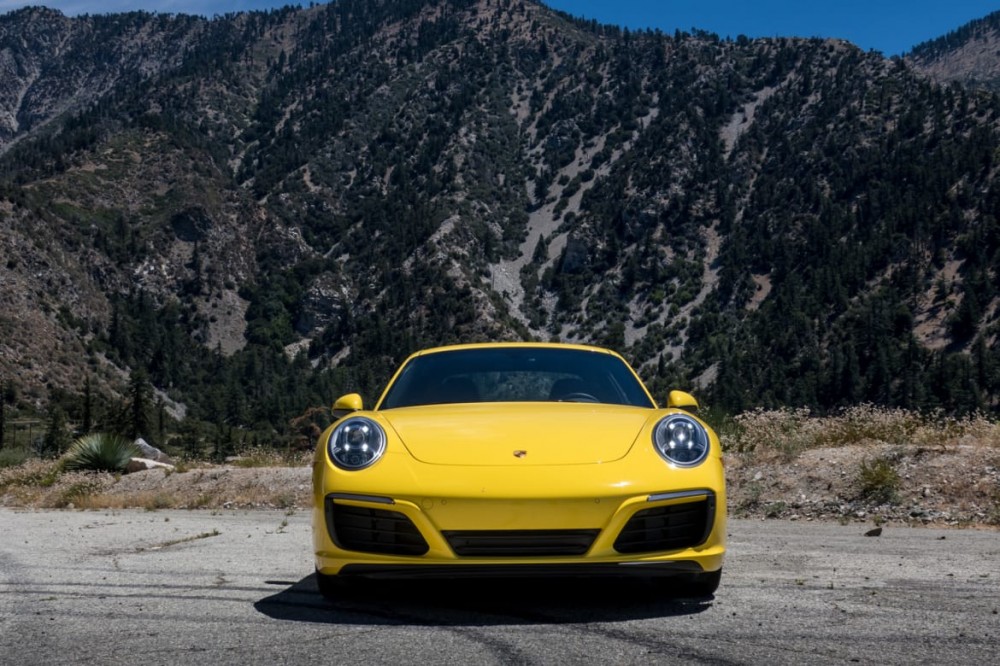
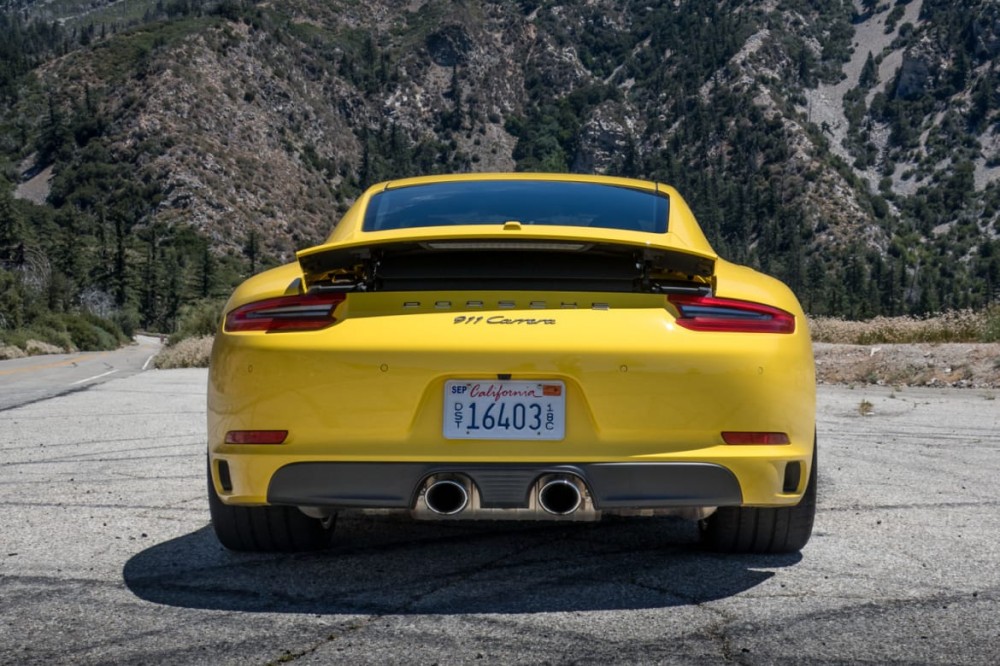
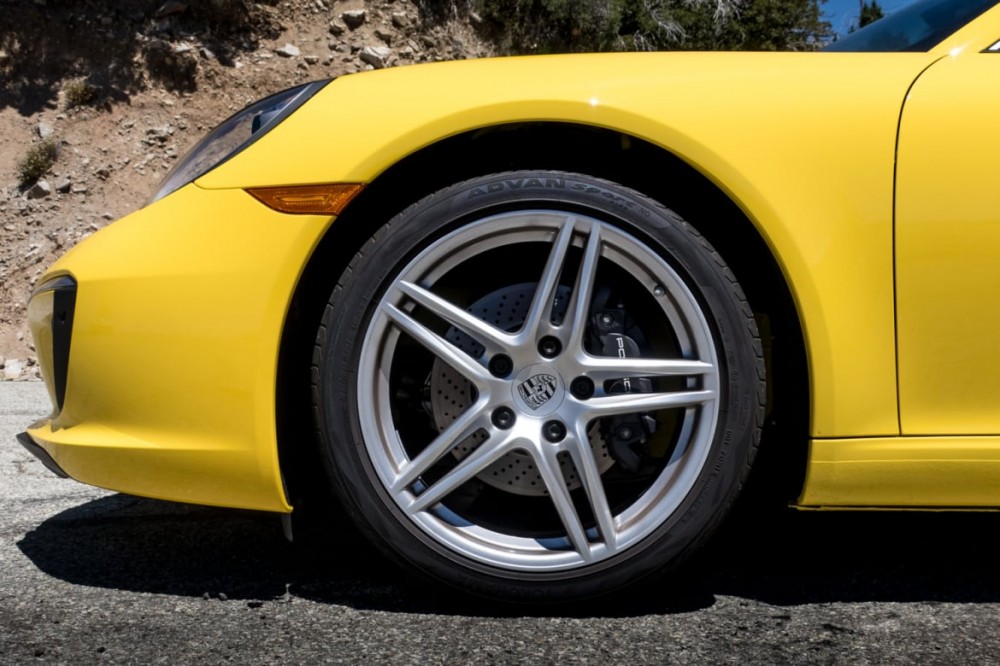
I was pleased to test a base model complete with a manual transmission, which is arguably the purest form of 911 you can buy now. My test car didn't include any performance options, either, save a sport exhaust system that makes the new turbocharged flat-six engine sing. It gives 911s with the rear-engine, rear-wheel-drive setup a chance to shine and show how unique they are compared with the competition, which includes the Chevrolet Corvette, Mercedes-AMG GT and Audi TT RS (compare those cars side by side here).
Performance Upgrades
All 911 models now feature turbocharging, and in the case of the 911 Carrera, that means goodbye to the old 3.4-liter, naturally aspirated, horizontally opposed six-cylinder engine and hello to a twin-turbocharged 3.0-liter flat-six. The new engine makes 370 horsepower and 331 pounds-feet of torque, improvements of 20 hp and 44 pounds-feet over the old one.
Porsche Adaptive Suspension Management is also standard equipment this year. It offers two settings for the suspension: Normal and Sport. Normal softens up the suspension for daily driving, while Sport firms up the shock absorbers to keep the car flat and stable in more aggressive driving.
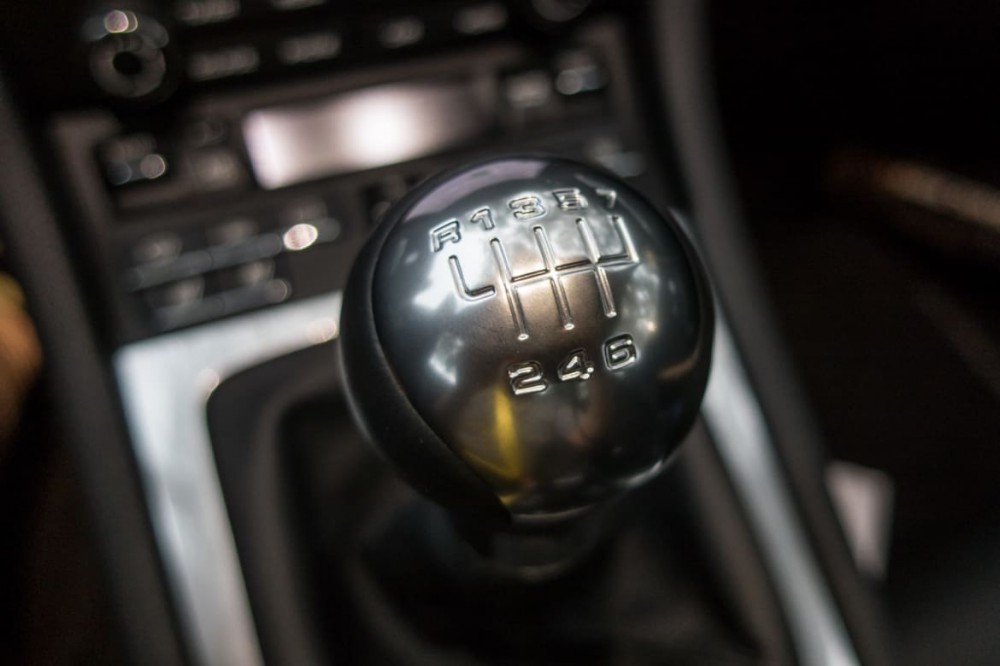
The two transmission options carry over: a seven-speed manual and an optional seven-speed dual-clutch automatic; Porsche calls the automatic PDK, and it's a $3,210 option. My test vehicle came with the manual, which is sublime. The shift action is especially satisfying, accompanied by a slight mechanical click. The very clear gates make it easy to find the gear you want. The clutch action is a bit heavy, with a high engagement point; it can make driving the 911 in traffic a bit of a chore, but it's a joy to operate on open roads.
Fuel-economy estimates for the 911 Carrera are 20/29/23 mpg city/highway/combined with the manual transmission and 22/30/25 mpg with the automatic. Premium gas is required.
Sublime Handling
Older 911s have a reputation for being a bit surly; having the engine in the rear puts a lot of weight on the rear tires, which can cause the back end to be twitchy when the car is pushed. I was prepared for that with the new version, as well, but was surprised to find that the car felt extremely planted. The adaptive suspension helps keep the car flat throughout and seems to help keep the nose of the car down, too. On corner entry, turn-in is sharp and abrupt, while the wide power band on the new engine (maximum torque is available from 1,700 to 5,000 rpm) makes it easy to keep the car in the power upon exit.
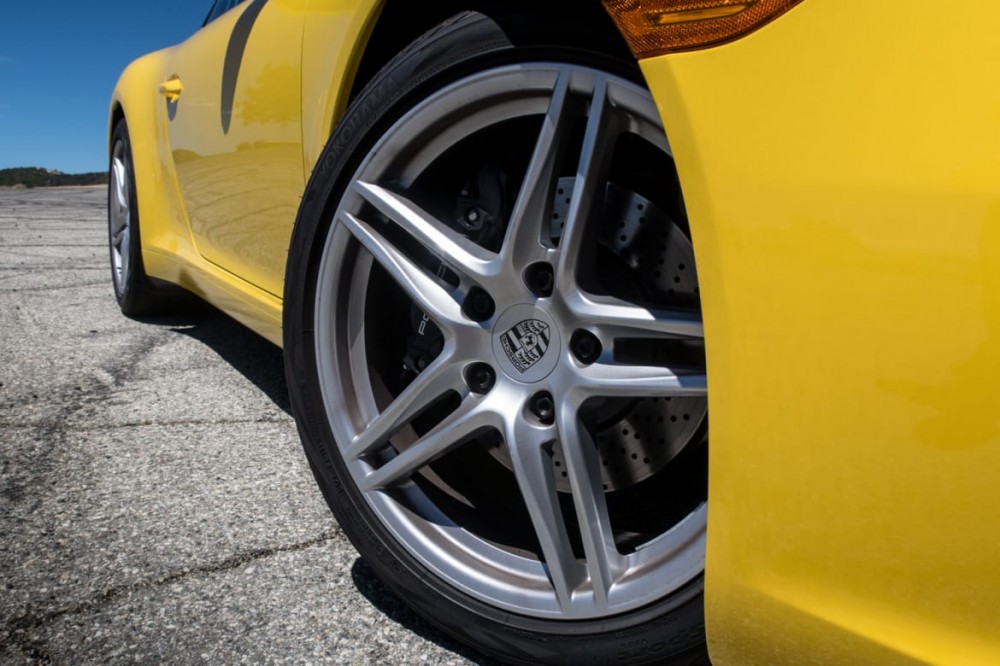
I've always preferred the Boxster/Cayman in a few ways, mostly because the mid-engine architecture in those cars gives them incredible balance. The 911 Carrera isn't quite that, but it's close — and pretty amazing.
One other bit of kudos to Porsche: It has the best electric power steering I've driven. This technology is widely used now, and with the old-school, hydraulic power-steering systems all but gone, Porsche's effort is as close as you'll get to replicating that feel. The typical complaint about these systems is that they're too light, or that they're heavy but don't offer enough feedback. Not so here; I didn't detect any vagueness, and the wheel was communicative about the status of the front wheels, which is very important on a car that's so nose-light.
Missing in Action
Most of the cars we test are loaded, but my test vehicle in this instance was lightly optioned. Porsche does offer option packages, but almost all of its optional features can be had a la carte. The biggest addition to my test car was a $2,950 sport exhaust system that sounds amazing; I left it turned on pretty much all the time (sorry, neighbors). Also added to my tester were auto-dimming mirrors ($420), heated seats ($690), ventilated seats ($840), four-way powered sport seats ($800), a GT Sport steering wheel ($330) and, finally, seat belts in racing yellow ($540), which matched the screaming paint job on the exterior. That put the final price tag at $97,010.
There are aspects of this car that match its lofty price tag: Its performance credentials are unquestioned, and it drives and looks like something that costs nearly six figures. But if you're looking for technology and safety features to match the price, you'll be disappointed.
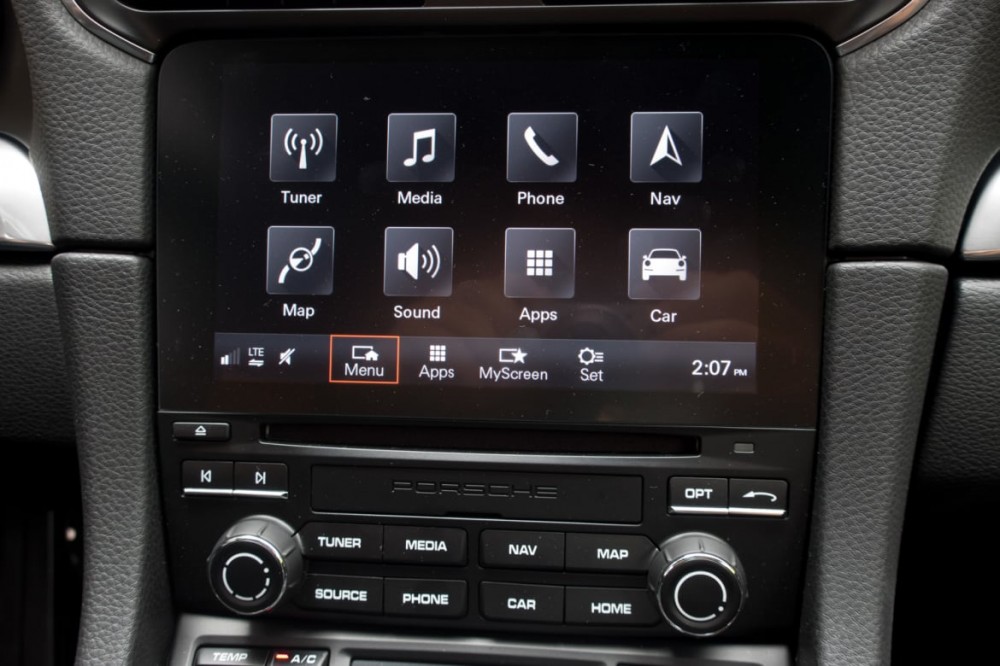
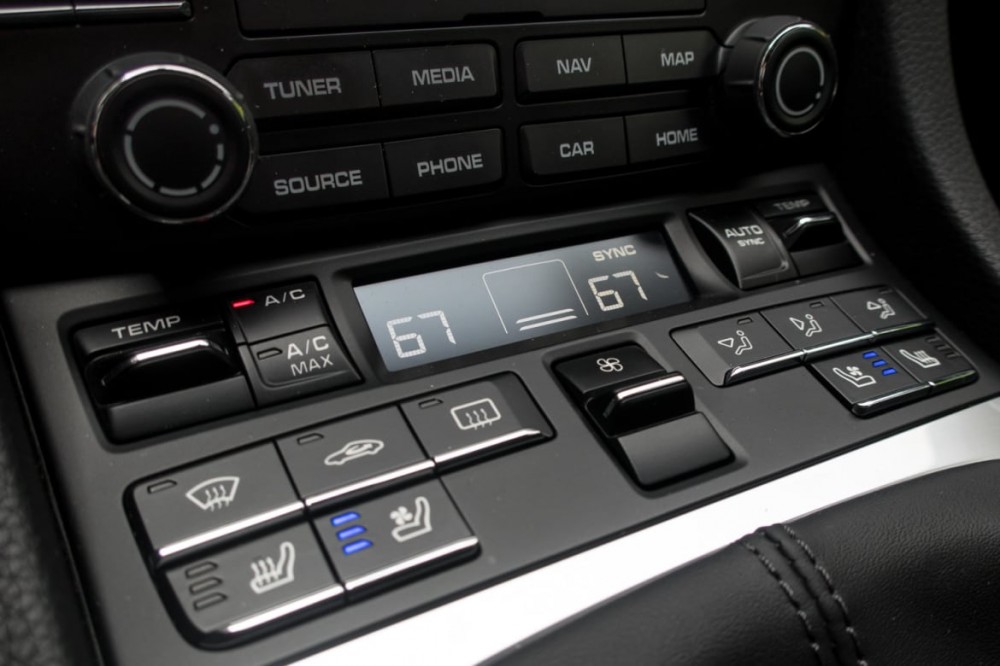
The first letdown is the multimedia system. For 2017, the 911 gets an updated system with a 7-inch touchscreen and navigation, but it's also curiously missing some other options. It has Apple CarPlay but no Android Auto, so if you have an Android phone, you'll be out of luck.
Safety features are also surprisingly absent. There's a backup camera as well as forward and rear parking sensors that help keep the 911's low front splitter from hitting parking blocks or curbs, but there are no standard autonomous driver aids to speak of. Adaptive cruise control and automatic emergency braking are optional ($2,490 for both systems), as is a blind spot monitoring system ($850). Those feel like weird omissions from the 911's standard equipment list given the direction more affordable cars are headed.
The 911 gets an updated multimedia system with a 7-inch touchscreen and navigation for 2017, but it’s curiously missing some other options.
Can It Be Practical?
The 911 Carrera is technically a four-seater, but the rear seats are more like vestigial limbs than anything useful. I had to climb back there to take photos of the interior and I'm still trying to get the kinks out of my neck. There's no real legroom to speak of, and the passenger seat's head restraint (which can't be adjusted) hits the roof when you tilt the backrest forward unless the seat has first been lowered to its very bottom setting and moved back. There are two sets of lower Latch anchors for child-safety seats back there, but good look contorting yourself to get even the seat in, let alone a child.
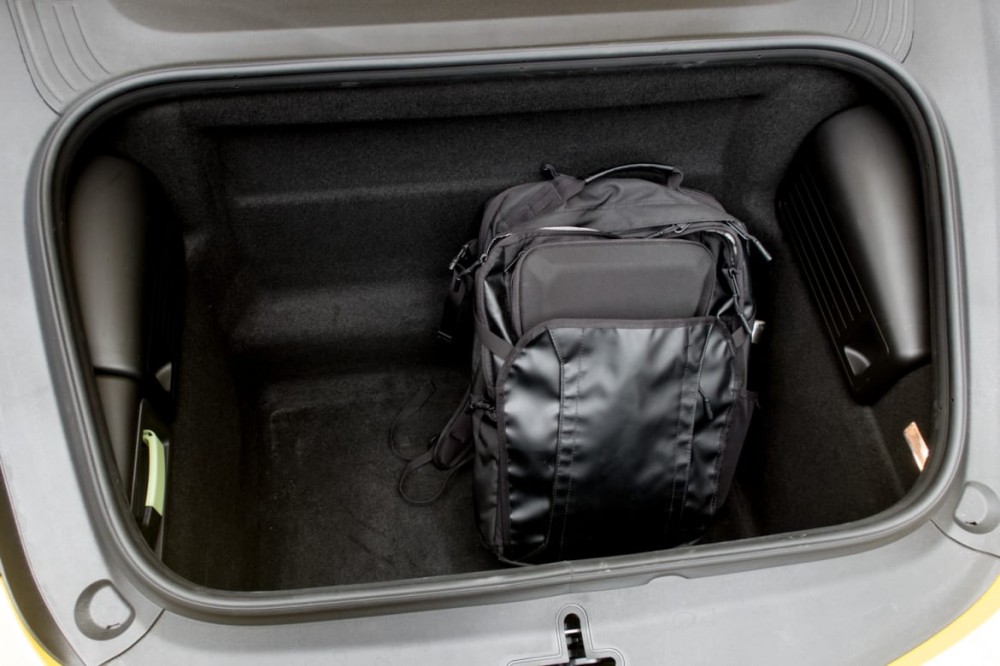
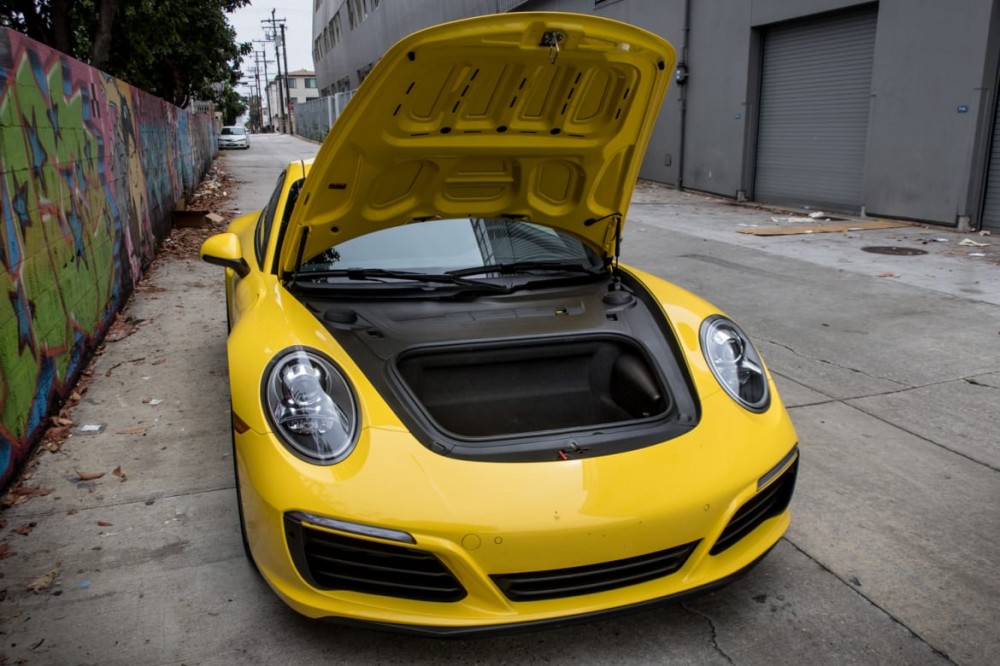
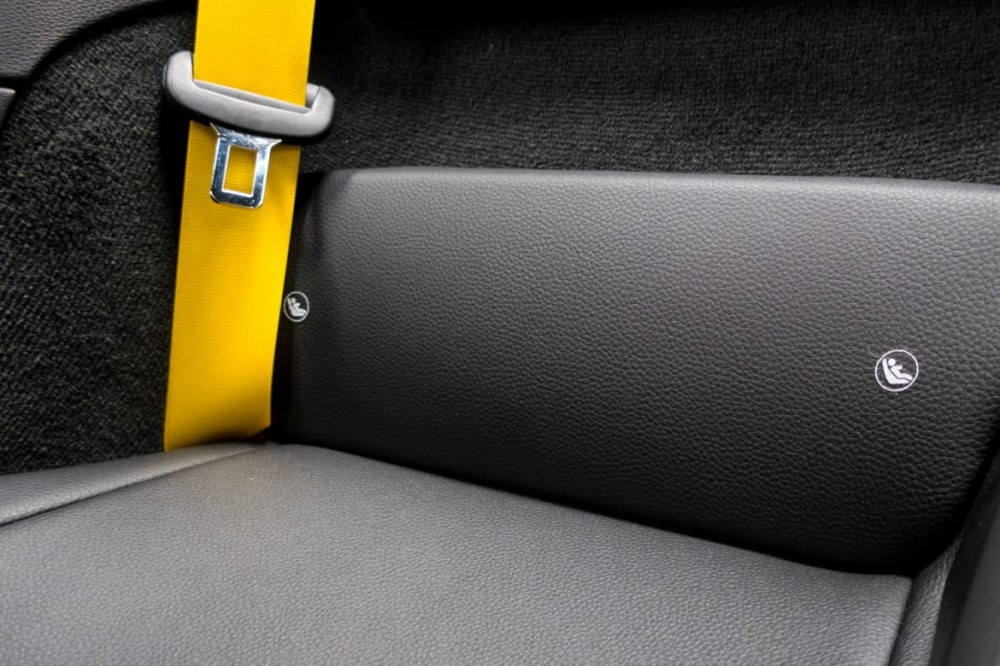
With the engine in back, the trunk is up front; it provides 5.12 cubic feet of space. That's enough to fit one piece of checked luggage and not much else — any additional bags would have to go in the backseat, which has a bit more room than the trunk: 9.18 cubic feet.
This makes the 911 a bit more practical than a Boxster or Cayman, or some other two-seat sports cars. If you want to go golfing, though, nobody else can ride along because the clubs will be buckled into the front seat.
In the Market
The 2017 911 Carrera's updates bolster its performance credentials, and the move to turbocharging means a more responsive engine that makes more power than last year's model. Yes, there are some weird quirks to the multimedia system, and this car doesn't offer the latest in driver aids and autonomous safety features, but to me, those concerns are secondary. The primary reason to buy one of these expensive machines is how it drives: The 911 Carrera is an unflinching, wickedly fun ride.



Leave a Reply